Interview with Paula Cucchiara, co-founder of Bodega Claroscuro
We invite you to explore the winery’s philosophy, its artistic connections, and its unique approach to winemaking.
When the morning sun crosses the jagged silhouette of the Andes, it casts spectacular shadows over the rolling vineyards of Finca San Francisco. Here, 1,054 meters above sea level in Vista Flores, Mendoza’s Uco Valley, nature has created the perfect canvas for artistic expression. This is the home of Bodega Claroscuro, where the line between winemaking and fine art is deliberately blurred, creating something far deeper than either pursuit could achieve alone.
The name Claroscuro-Spanish for chiaroscuro, the Renaissance painting technique that emphasizes the contrast between light and shadow- perfectly captures the winery’s philosophy. Just as painters used this technique to create depth and drama, founders Gustavo and Paula Cucchiara understand that true character arises from contrast- whether in art or in wine. Their winery stands as a testament to this belief, where each bottle tells a story that begins in the vineyard and culminates in a sensory experience framed by Argentine artistic expression.
Sitting under the warm sun in a lovely patio overlooking a scenic vineyard, Paula Cucchiara welcomes us to share how the winery began and how it has flourished into the enchanting place it is today.
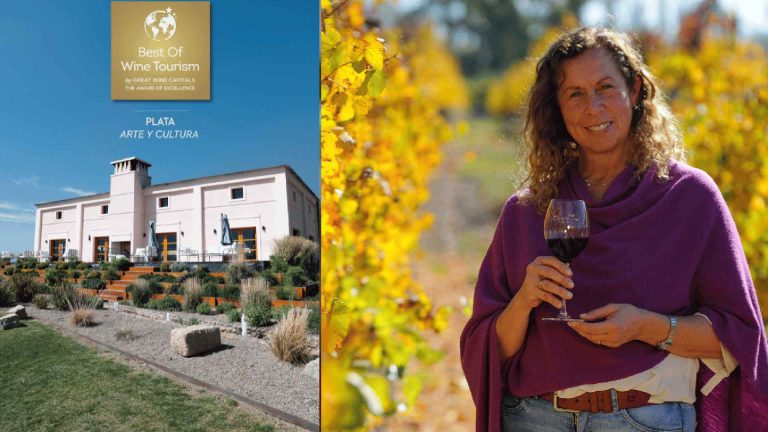
AWT: Paula, thank you for welcoming us to Bodega Claroscuro. Could you tell us how it all began? What first drew you and Gustavo to this particular vineyard in the Uco Valley?
Paula Cucchiara: It was truly a moment of connection. In 2012, we were exploring the valley, looking for the right place to bring our vision to life. When we discovered this property in Vista Flores- with its varied terrain and magnificent view of the Andes- we both felt it immediately. The vineyard had character: the slopes, the way an ancient riverbed had carved it over millennia. There was something almost artistic about the landscape. We could already imagine how the different grape varieties would express themselves across the property’s distinct sections. It wasn’t just a vineyard for growing grapes; it was a canvas waiting for our vision.
AWT: The name “Claroscuro” is quite distinctive. Could you explain its meaning in relation to your winemaking philosophy?
Paula: Claroscuro- or chiaroscuro in Italian- is a Renaissance painting technique that emphasizes the contrast between light and shadow to create depth and drama. This concept captures exactly what we aim for in our wines. Just as an artist uses light and shadow to give dimension to a painting, we work with the contrasting elements of our terroir- different elevations, soil compositions, the way sunlight plays across the vineyard throughout the day- to create wines with depth and character.
We believe that true personality- whether in art or in wine- emerges from these contrasts. Our Malbec, for example, balances power and elegance, structure and suppleness. It’s in these opposing elements that complexity and intrigue are found, like in a great painting where the eye is drawn to the interplay of light and dark.
AWT: Your winery is known for its unique integration of Argentine art and winemaking. How did this concept develop?
Paula: Gustavo and I have always been passionate about both wine and art. Even before founding the winery, we collected works by Argentine artists and frequently visited galleries. When we started developing Claroscuro, we realized there was a natural connection between these two forms of creative expression.
Wine, like art, engages the senses and evokes emotion. It reflects both its origin- the terroir- and the hand of its creator. We wanted to honor that parallel by creating a winery where the boundaries between viticulture and visual art would dissolve.
The idea of featuring artworks on our labels came naturally. Each wine has its own personality, its own emotional impact. We wanted the labels to be a visual introduction to what’s inside each bottle- setting the stage for the experience to come.
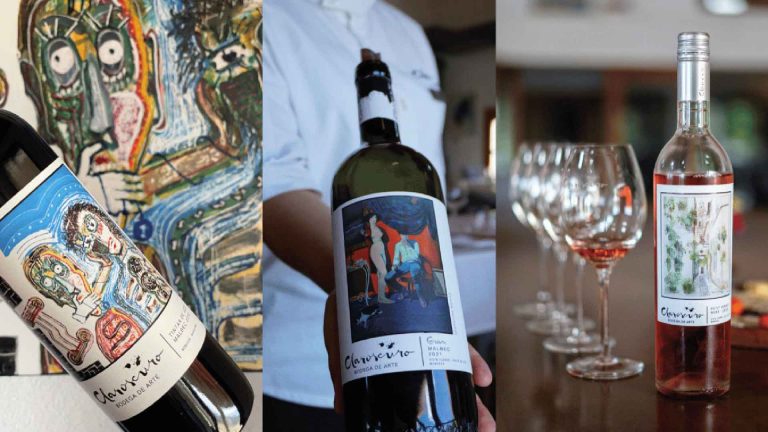
AWT: Could you explain how you select the artworks for your labels? How does a particular painting connect to a specific wine?
Paula: It’s a deeply intentional process. We start by tasting the wine and reflecting on its character. What emotions does it evoke? Is it bold and structured, or more delicate and nuanced? Does it reveal itself immediately or gradually? We consider its aromas, mouthfeel, finish- all the elements that define its personality.
Then we look for artworks that align with those qualities. Sometimes it’s about matching energy- a vibrant, expressive Malbec might pair with a dynamic, colorful painting.
Other times, it’s about complementing themes- our Pinot Noir, for instance, with its refined elegance, might find its visual counterpart in a more contemplative work.
The relationship between wine and art should be symbiotic. Looking at the label should give you a sense of what awaits in the glass. Tasting the wine should, in turn, confirm the sensations suggested by that image.
That’s why we were thrilled to receive the recognition and award by the prestigious international competition Best of Wine Tourism in the category of Art and Wine, precisely for our concept of our “Wine Labels that Tell Stories”.
AWT: Your labels feature works from various Argentine artists. How important is it to promote local artistic talent through your wines?
Paula: Extremely important. Argentina has an incredibly rich artistic heritage and a thriving contemporary art scene that deserves recognition. By featuring these artists on our labels, we help bring their work to a broader audience- not only in Argentina but around the world.
We collaborate with both established and emerging artists. Some of our labels feature iconic Argentine figures, while others introduce rising talents such as Mariela González, Darío Mastrosimone, and Sol Curto. These younger artists bring fresh perspectives and a vibrant energy that resonates beautifully with our wines.
Each bottle becomes a small ambassador of Argentine culture, carrying not only our wine but also our artistic expression into homes and restaurants worldwide.
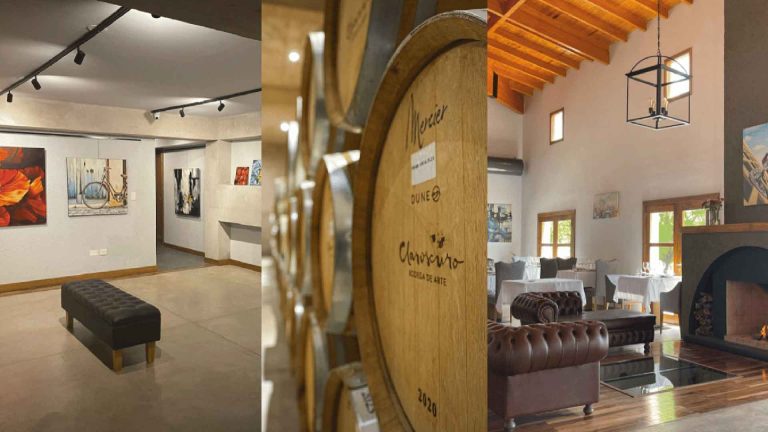
AWT: Bodega Claroscuro is known not only for its wines but also for the visitor experience it offers. What do you hope guests take away from their visit?
Paula: We want visitors to experience something that engages all their senses- and perhaps challenges their preconceptions about what a winery visit can be. Yes, they’ll taste exceptional wines that express our unique terroir, but they’ll also immerse themselves in an environment where art and wine interact in meaningful ways.
Our architecture, our gardens, the artwork displayed throughout the property- all of it works together to create a holistic experience. And of course, our culinary program completes the sensory journey, with dishes carefully designed to harmonize with our wines.
We hope guests leave with a deeper appreciation for how different forms of creativity- winemaking, visual art, culinary art- can elevate and illuminate one another. And maybe they’ll take home not just a bottle of wine, but a new way of experiencing it- more thoughtful, more complete.
AWT: The “art and wine” concept has become increasingly popular in recent years. What sets Claroscuro apart?
Paula: What makes us different is that for us, it’s not a marketing concept- it’s our core philosophy. Art isn’t something we add to our wines; it’s woven into everything we do, from how we approach the vineyard to how we design our winery spaces.
Our winemakers think like artists. and even our vineyard management reflects this mindset, with the same attention to composition and balance that a painter brings to a canvas.
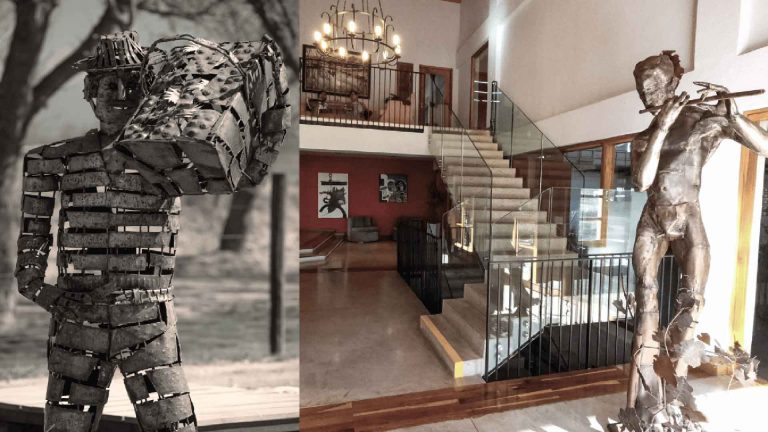
AWT: Looking ahead, how do you see Claroscuro evolving while staying true to its artistic roots?
Paula: We’re always exploring and experimenting, as artists do. Recently we’ve acquired distinctive Malbec parcels in Gualtallary, Paraje Altamira, and El Cepillo- among other sub-regions for our Single Vineyard wines- allowing us to showcase how this versatile grape expresses itself across different terroirs within the Uco Valley.
We’re also deepening our engagement with the art community. We host exhibitions at the winery featuring the artists on our labels, and we’re developing residency programs that bring artists to the vineyard. Imagine painters creating works inspired by the landscape, or musicians composing pieces that echo the rhythm of the seasons.
Whatever new directions we explore, our core philosophy remains unchanged: we believe wine is more than a beverage- it’s an art form that captures a specific place, time, and vision. Every bottle we produce continues to honor that belief.
AWT: Finally, Paula, when you pour someone a glass of Claroscuro for the first time, what do you hope they experience?
Paula: I hope they experience a moment of discovery- that wonderful instant when something speaks to you on multiple levels. First, of course, there’s sensory pleasure: the aromas that draw you in, the flavors that unfold on your palate, the texture and weight of the wine in your mouth.
But beyond that, I hope they feel the story behind the wine- the unique character of our vineyard, the careful attention of our winemaking team, the artistic sensitivity that guided its creation. I hope they feel a connection not just to the wine, but to this special corner of Argentina, with its breathtaking landscape and rich cultural heritage.
And perhaps most importantly, I hope they experience that magical quality that great wine shares with great art- the ability, if only for a moment, to change your perspective, to make you see the world a little differently than you did before. That is the true gift of claroscuro, in both painting and wine: the revelation that arises from the play of light and shadow.
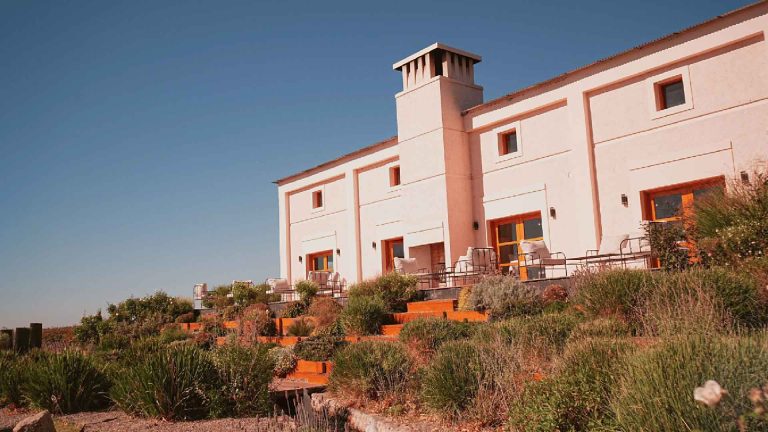
Would you like to enjoy this experience, which gathers art, gastronomy and wines?
Contact us to begin your journey—because some places aren’t just visited, they are experienced.